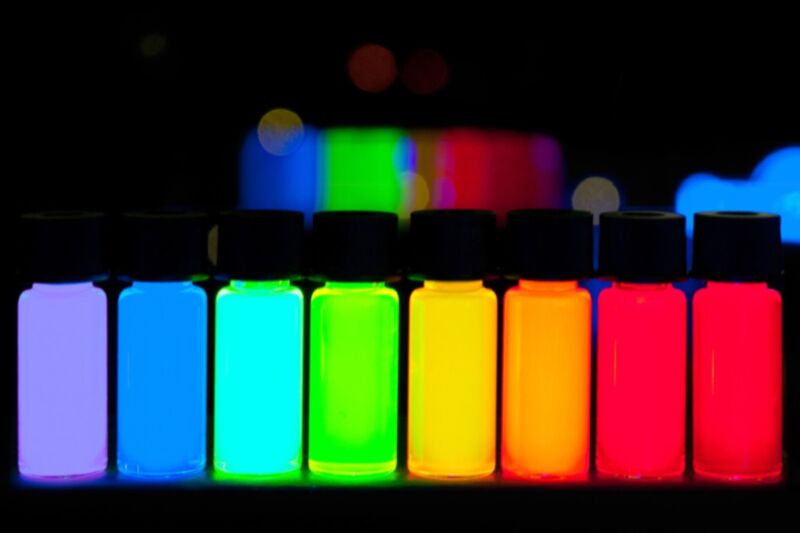Scientists make non-toxic quantum dots for shortwave infrared image sensors

Enlarge / Vials of quantum dots with gradually stepping emission from violet to deep red. (credit: Antipoff/CC BY-SA 3.0)
Shortwave infrared light (SWIR) sensors are desirable in a broad range of applications, particularly in the service robotics, automotive, and consumer electronics sectors. Colloidal quantum dots tuned to SWIR show promise for such sensors since they can be easily integrated into CMOS, but their mass market use has been hampered by the fact that most contain toxic heavy metals like lead or mercury. Now a team of scientists has manufactured quantum dots out of non-toxic materials and tested them in a fabricated lab-scale photodetector, according to a recent paper published in the journal Nature Photonics.
“SWIR light for sensing and imaging is of paramount importance owing to its unique characteristics,” the authors wrote. “It is eye safe; it can penetrate through fog, haze, and other atmospheric conditions, enabling imaging under adverse weather for automotive applications, environmental, and remote sensing; the presence of night glow under night in the SWIR range enables passive night vision; and visual imaging combined with infrared spectroscopy enables machine vision, bio imaging, and food and process quality inspection,” among other applications.
As previously reported, a quantum dot is a small semiconducting bead a few tens of atoms in diameter. Billions could fit on the head of a pin, and the smaller you can make them, the better. At those small scales, quantum effects kick in and give the dots superior electrical and optical properties. They glow brightly when zapped with light, and the color of that light is determined by the size of the quantum dots. Bigger dots emit redder light; smaller dots emit bluer light. So you can tailor quantum dots to specific frequencies of light just by changing their size.
